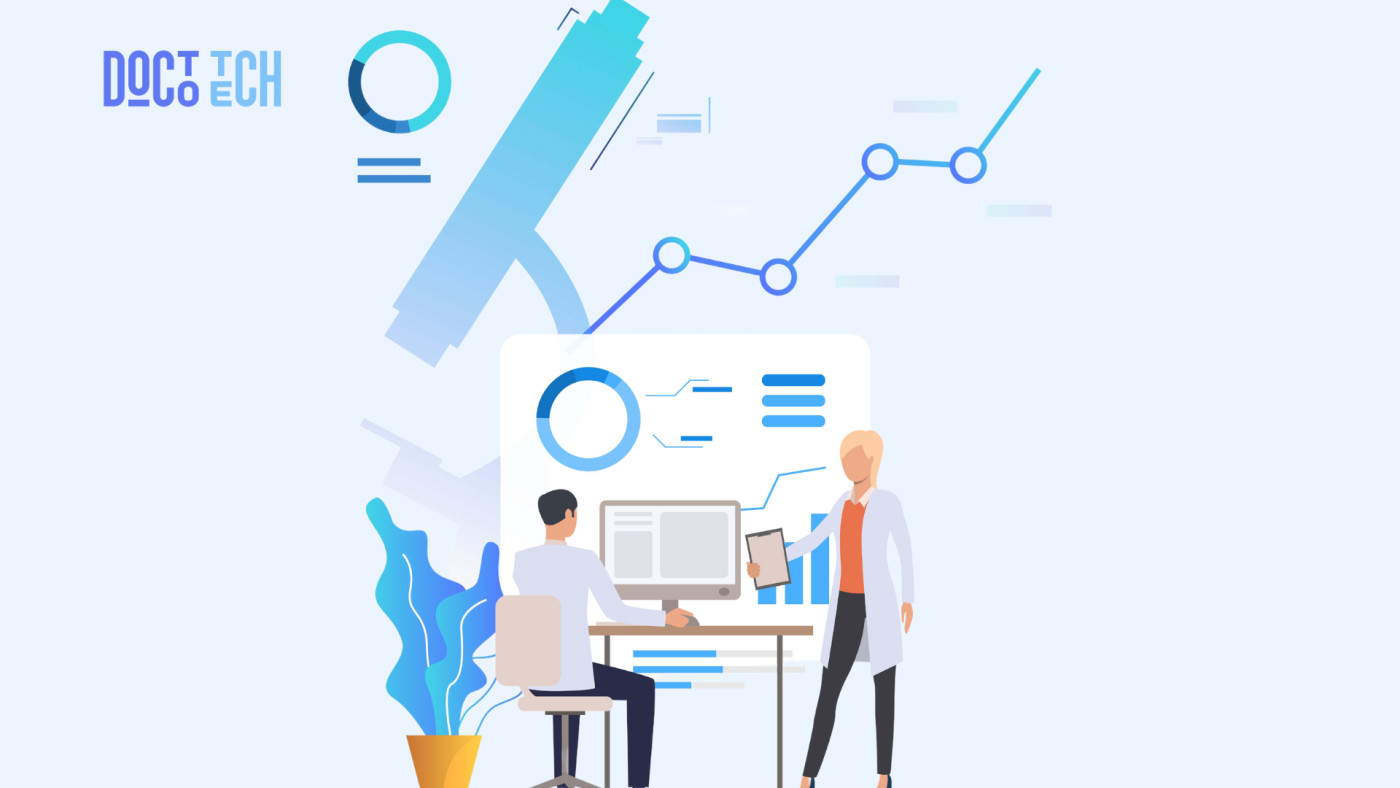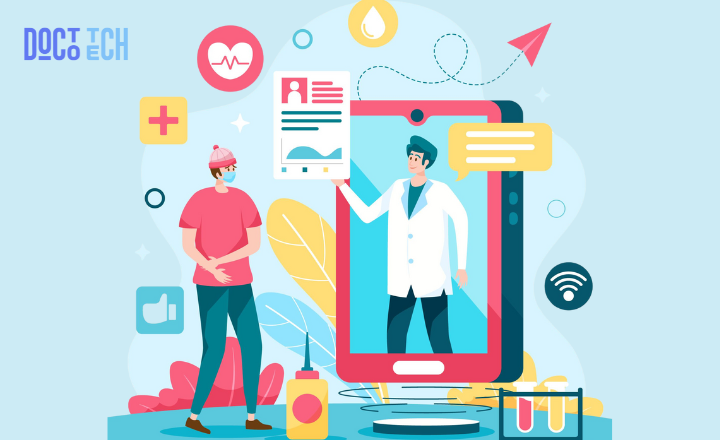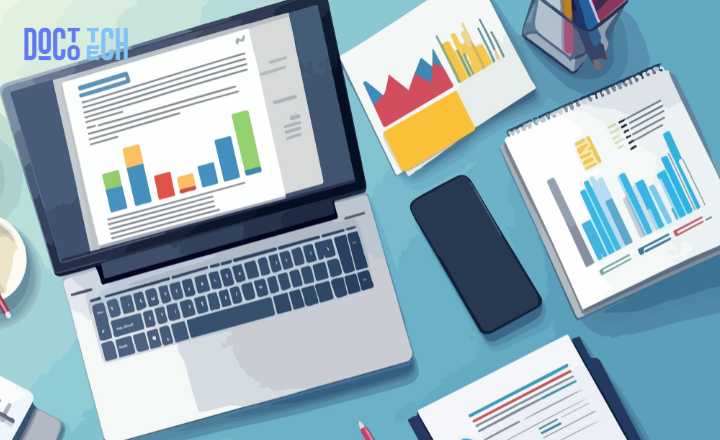Digital Solutions for Improving Healthcare Workflow Efficiency
In today’s healthcare environment, optimizing workflow efficiency is essential for delivering quality care while managing administrative demands. Manual processes and outdated systems can slow down operations, leading to delays, errors, and frustrations for both patients and providers. Fortunately, digital solutions for healthcare workflow efficiency offer practical tools that streamline operations, reduce bottlenecks, and improve the overall patient experience.
Here’s how healthcare providers can leverage digital tools and strategies to optimize workflows, enhance productivity, and deliver better care.
1. Electronic Health Records (EHRs) for Streamlined Documentation
One of the most impactful digital tools for improving workflow efficiency is the Electronic Health Record (EHR) system. EHRs consolidate patient information, medical history, and treatment plans into a single, easily accessible digital platform. This eliminates the need for paper records, reduces the risk of errors, and enables real-time access to patient data across departments.
Key Benefits of EHRs:
- Instant Access to Patient Data: Providers can quickly retrieve patient histories, lab results, and treatment notes, improving decision-making and reducing time spent searching for records.
- Automated Documentation: EHRs automate much of the documentation process, reducing administrative burdens and allowing providers to spend more time with patients.
- Interdepartmental Coordination: EHRs enable seamless sharing of patient information between departments, ensuring consistent and coordinated care.
By digitizing patient records, EHR systems significantly reduce the time spent on documentation and improve the accuracy of patient information, optimizing healthcare workflows.
2. Appointment Scheduling Software for Improved Patient Flow
Efficient appointment scheduling is crucial for avoiding operational bottlenecks and improving patient flow. Digital appointment scheduling systems allow patients to book, reschedule, or cancel appointments online, reducing the administrative burden on staff and preventing scheduling conflicts.
Features of Digital Scheduling Software:
- Real-Time Calendar Syncing: Appointment systems sync with provider calendars, preventing double bookings and making it easier to manage appointments across multiple providers.
- Automated Reminders: Patients receive SMS or email reminders about upcoming appointments, reducing no-shows and last-minute cancellations.
- Self-Service Portals: Patients can manage their own appointments through a patient portal, reducing phone calls and improving the patient experience.
By automating the appointment scheduling process, healthcare providers can optimize their daily schedules, reduce downtime, and ensure a smoother flow of patients through the practice.
3. Telemedicine Platforms for Flexible Care Delivery
Telemedicine has revolutionized healthcare by providing patients with remote access to care while also improving workflow efficiency for providers. Virtual consultations reduce the need for in-office visits, allowing healthcare providers to see more patients and manage their time more effectively.
Benefits of Telemedicine for Workflow Efficiency:
- Expanded Access: Telemedicine platforms allow providers to offer flexible appointment options, reducing in-office congestion and improving patient satisfaction.
- Reduced Wait Times: Virtual visits streamline the consultation process, reducing time spent in waiting rooms and improving overall patient flow.
- Efficient Follow-Up Care: Providers can use telemedicine to conduct follow-up appointments and check-ins with minimal disruption to their schedules.
Telemedicine offers healthcare providers a flexible, efficient solution for managing patient care, reducing wait times, and optimizing appointment workflows.
4. Automated Billing Systems for Streamlined Financial Processes
Manual billing and payment collection can create significant bottlenecks in healthcare workflows, especially when it comes to managing insurance claims, co-pays, and overdue payments. Automated billing systems simplify the financial side of healthcare by automating invoices, claims submissions, and payment reminders.
How Automated Billing Improves Workflow:
- Faster Payments: Patients can pay bills online through a secure portal, reducing the need for in-person payments and improving cash flow.
- Insurance Integration: Billing systems can integrate with insurance providers, streamlining the claims submission process and reducing errors.
- Automated Payment Reminders: Automated systems send reminders for overdue payments, reducing the need for manual follow-up and improving payment rates.
By automating the billing process, healthcare practices can reduce administrative tasks, accelerate payment collection, and maintain financial stability.
5. Task Management Tools for Efficient Team Coordination
Efficient team coordination is critical for reducing bottlenecks and ensuring that tasks are completed on time. Digital task management tools allow healthcare teams to assign tasks, track progress, and communicate more effectively, improving the overall workflow.
Key Features of Task Management Tools:
- Task Assignment and Deadlines: Providers can assign specific tasks to staff members and set deadlines, ensuring that tasks are completed in a timely manner.
- Progress Tracking: Staff can update the status of tasks, allowing providers to track progress and ensure that nothing falls through the cracks.
- Centralized Communication: Task management platforms enable staff to communicate within the system, reducing the need for back-and-forth emails or meetings.
By improving team coordination and accountability, task management tools help reduce operational inefficiencies and ensure smoother workflows.
6. Clinical Decision Support Systems (CDSS) for Better Decision-Making
Clinical Decision Support Systems (CDSS) use data analytics and artificial intelligence to provide healthcare providers with real-time recommendations for diagnosis, treatment, and care planning. These tools improve decision-making and reduce the time spent on manual research or diagnosis.
Benefits of CDSS:
- Data-Driven Insights: CDSS analyzes patient data and clinical guidelines to provide evidence-based recommendations, helping providers make informed decisions quickly.
- Error Reduction: By offering alerts for potential drug interactions, dosage errors, or treatment inconsistencies, CDSS reduces the risk of mistakes.
- Streamlined Diagnosis: CDSS tools help providers arrive at diagnoses faster by analyzing symptoms and medical histories, improving overall patient care efficiency.
With the help of CDSS, healthcare providers can make more accurate and timely decisions, improving both the quality of care and the efficiency of workflows.
7. Inventory Management Systems for Optimized Resource Allocation
Managing medical supplies and equipment is a crucial part of healthcare operations, and inefficient inventory management can lead to delays and wasted resources. Inventory management systems help healthcare providers track supplies, monitor usage, and automate reordering processes.
How Inventory Management Systems Improve Efficiency:
- Real-Time Tracking: Digital inventory systems track the availability of medical supplies in real time, ensuring that providers always have the resources they need.
- Automated Reordering: When supplies run low, the system can automatically reorder items, preventing shortages and ensuring continuous operations.
- Usage Analytics: Providers can analyze usage patterns to optimize supply ordering and reduce waste, improving cost-efficiency.
By automating inventory management, healthcare providers can ensure they have the necessary resources on hand, reducing delays and operational bottlenecks.
8. Patient Portals for Streamlined Communication
Patient portals enhance communication between patients and providers by giving patients direct access to their health information, appointment scheduling, and messaging. These portals reduce the need for phone calls and in-person visits for routine tasks, improving workflow efficiency for both staff and providers.
Benefits of Patient Portals:
- Secure Messaging: Patients can communicate with their healthcare providers through secure messaging, reducing the need for phone calls and improving response times.
- Access to Records: Patients can view their medical records, test results, and treatment plans directly through the portal, reducing administrative tasks for staff.
- Online Scheduling and Payments: Patients can book appointments and pay bills through the portal, further reducing the administrative workload and improving patient satisfaction.
By offering self-service options to patients, healthcare practices can streamline communication, reduce administrative burdens, and improve overall workflow efficiency.
Conclusion: Embracing Digital Solutions for Optimized Workflows
Implementing digital solutions for healthcare workflow efficiency is essential for modern healthcare practices looking to streamline operations, reduce bottlenecks, and enhance patient care. From EHR systems and appointment scheduling software to telemedicine platforms and automated billing systems, these tools help healthcare providers improve productivity and focus more on delivering quality care.
DoctoTech specializes in providing healthcare practices with cutting-edge digital solutions that improve workflow efficiency and reduce operational burdens. Let us help you implement the right tools to enhance your practice’s performance and patient care.














